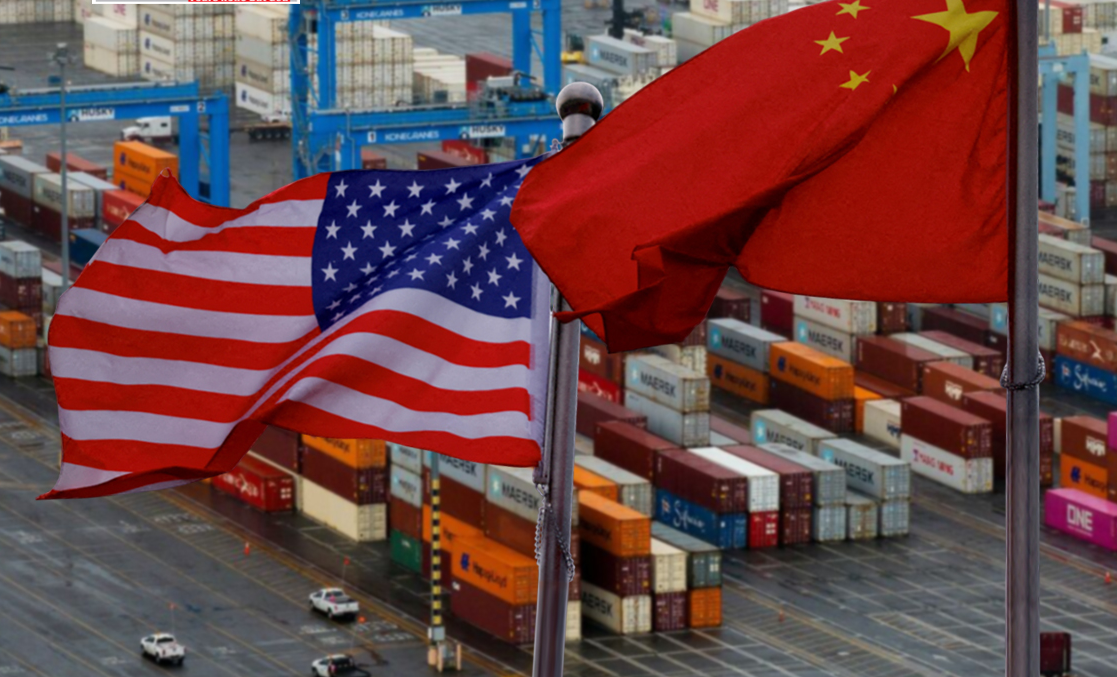The recent China-U.S. economic and trade talks have helped ease trade tensions between the world’s two largest economies. Tariffs have been reduced significantly, lifting the pessimistic mood. However, a sustainable trade agreement has not yet been sealed.

High-level economic and trade talks in Geneva, Switzerland, between China and the United States have yielded a significant reduction of tariff rates and a mutual pledge to continue negotiations. This de-escalation of tensions between the world’s two largest economies has forestalled the risk, for now, of a de facto trade embargo, and lifted market pessimism.
Pause opens window of opportunity
The tariff suspension brings some temporary relief to the China-U.S. economic and trade relationship, with positive messages released by both sides. China highlighted “substantial progress and important consensus,” while the U.S. described the talks as “productive and substantial.” These rare positive remarks signal that some common ground has been found on core issues.
U.S. President Donald Trump views the talks as an outright reset of U.S.-China relations, with the 90-day tariff reduction agreement serving as a means to mend the relationship. U.S. Trade Representative Jamieson Greer said it’s important to understand how quickly the two sides are able to come to agreement, as this shows that the differences perhaps were not as large as may have been thought. The U.S. also sees the first-stage agreement as a possible template for future tariff negotiations, setting the stage and possibly serving as a model for further talks.
The newly established economic and trade consultation mechanism marks significant progress in normalizing negotiations. It requires that lead negotiators from both sides conduct further consultations regarding their respective concerns. Previously, mechanisms such as the Strategic and Economic Dialogue and the Joint Commission on Commerce and Trade were designed to address trade and economic issues but were suspended under the first Trump administration. The Phase One trade agreement between China and the U.S. included a consultation mechanism with enforcement measures that were disrupted after the change in U.S. leadership. During the administration of Joe Biden, two high-level mechanisms — the Economic Working Group and the Financial Working Group — were convened. They were led on the U.S. side by U.S. Treasury Secretary Scott Bessent. In contrast, the U.S. trade representative had few substantive discussions with China.
The new trade negotiation mechanism will focus more on tariffs, non-tariff barriers and market access. Bessent believes this communication channel will help prevent unfortunate escalations like those seen after April 2.
The 90-day suspension of high tariffs is conducive to stabilizing supply chains, maintaining global economic order and boosting market confidence. It also prevents broader, chaotic decoupling as a result of wary countries fearing a full-blown trade war. Companies whose supply chains are disrupted by high tariffs can now reassess and mend.
As for American small businesses, limited profit margins and capital reserves make them highly vulnerable to tariff increases and unable to adjust supply chains quickly. It is by no means easy for U.S. businesses to shift supply chains to lower-tariff countries, as factories outside China are either overwhelmed or lack the technological capability to handle their orders. In contrast, China’s sophisticated ecosystem of manufacturers, suppliers, workers and infrastructure, enables affordable pricing and a rich lineup of products — everything needed as an unrivaled and resilient manufacturing hub.
Pitfalls after 90-day pause
It is important to note that even with the tariff cuts, trade volumes across the Pacific are trending downward. Although both sides have temporarily reduced tariffs to 10 percent, the U.S. continues to impose a 20 percent tariff on the precursors of fentanyl, as well as sectoral tariffs such as those under Section 301. Notably, the tariff reduction for Chinese goods does not apply to specific industries such as automobiles, steel and aluminum.
Some economists estimate that the overall tariff level imposed by the U.S. on Chinese goods remains at 40 to 50 percent, in the ballpark of the level declared by Trump. Under these effective tariff rates, China’s exports to the U.S. may decrease by as much as one-third. Trump’s on-again/off-again tariff behavior makes it difficult for businesses to make long-term plans. During the tariff suspension, U.S. retailers of holiday decor and healthcare items may take the opportunity to restock, but imports of daily necessities and household appliances may not surge significantly. Faced with uncertainties, businesses will remain hesitant to make future investments.
Trump has already indicated that if a trade agreement is not reached within 90 days, tariffs on Chinese goods will rise again, though not back to 145 percent. This underscores the concern that renewed pressure from the U.S. is a distinct possibility. The Trump administration’s attempt to simultaneously push forward trade negotiations with multiple countries is unlikely to address the root causes of trade problems. Coercion based on power is prone to provoke social resentment and resistance in other countries, making negotiations with the U.S. more likely to reach an impasse.
Precedents from Trump’s first term show that reaching a comprehensive trade agreement typically requires a longer period of time. Moreover, as businesses take advantage of the tariff suspension period to stock up, the U.S. trade deficit with China may widen. This could dampen the Trump administration’s motivation to reach an agreement.
Some U.S. political voices continue to champion policies to contain China. Strategic thinkers doubt the consultation mechanism’s effectiveness, fearing that China will “talk the talk” but not “walk the walk.” Political hard-liners criticize Trump for “backing down” and warn that reducing tariffs via a trade deal could weaken his leverage and derail his ambitious hope to revitalize U.S. manufacturing.
Congressional lawmakers are demanding more details on the negotiations and the ultimate agreement, as they are skeptical that a deal will broadly benefit Americans. Industry groups urge moving beyond the Phase One model, warning that relying solely on purchase commitments could boost China’s economy. Such dynamics underscore the significant uncertainties in achieving a sustainable China-U.S. trade agreement.
